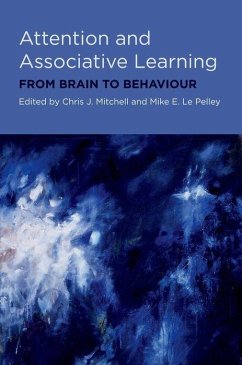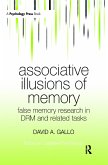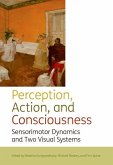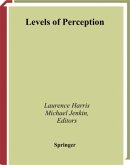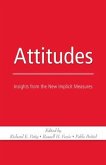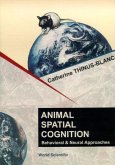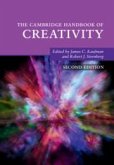Attention and Associative Learning
From Brain to Behaviour
Herausgeber: Mitchell, Chris; Le Pelley, Mike
Schade – dieser Artikel ist leider ausverkauft. Sobald wir wissen, ob und wann der Artikel wieder verfügbar ist, informieren wir Sie an dieser Stelle.
Attention and Associative Learning
From Brain to Behaviour
Herausgeber: Mitchell, Chris; Le Pelley, Mike
- Gebundenes Buch
- Merkliste
- Auf die Merkliste
- Bewerten Bewerten
- Teilen
- Produkt teilen
- Produkterinnerung
- Produkterinnerung
This book brings together leading international learning and attention researchers to provide both a comprehensive and wide-ranging overview of the current state of knowledge of this area as well as new perspectives and directions for the future.
Andere Kunden interessierten sich auch für
![Associative Illusions of Memory Associative Illusions of Memory]() David GalloAssociative Illusions of Memory197,99 €
David GalloAssociative Illusions of Memory197,99 €![Perception, Action, and Consciousness Perception, Action, and Consciousness]() Perception, Action, and Consciousness144,99 €
Perception, Action, and Consciousness144,99 €![Levels of Perception Levels of Perception]() Laurence Harris / Michael Jenkin (eds.)Levels of Perception187,99 €
Laurence Harris / Michael Jenkin (eds.)Levels of Perception187,99 €![Attitudes Attitudes]() Attitudes197,99 €
Attitudes197,99 €![Animal Spatial Cognition: Behavioural and Brain Approach Animal Spatial Cognition: Behavioural and Brain Approach]() Catherine Thinus-BlancAnimal Spatial Cognition: Behavioural and Brain Approach59,99 €
Catherine Thinus-BlancAnimal Spatial Cognition: Behavioural and Brain Approach59,99 €![The Cambridge Handbook of Creativity The Cambridge Handbook of Creativity]() The Cambridge Handbook of Creativity225,99 €
The Cambridge Handbook of Creativity225,99 €
This book brings together leading international learning and attention researchers to provide both a comprehensive and wide-ranging overview of the current state of knowledge of this area as well as new perspectives and directions for the future.
Produktdetails
- Produktdetails
- Verlag: Hurst & Co.
- Seitenzahl: 424
- Erscheinungstermin: 30. September 2010
- Englisch
- Abmessung: 236mm x 157mm x 30mm
- Gewicht: 739g
- ISBN-13: 9780199550531
- ISBN-10: 0199550530
- Artikelnr.: 31970744
- Herstellerkennzeichnung
- Libri GmbH
- Europaallee 1
- 36244 Bad Hersfeld
- gpsr@libri.de
- Verlag: Hurst & Co.
- Seitenzahl: 424
- Erscheinungstermin: 30. September 2010
- Englisch
- Abmessung: 236mm x 157mm x 30mm
- Gewicht: 739g
- ISBN-13: 9780199550531
- ISBN-10: 0199550530
- Artikelnr.: 31970744
- Herstellerkennzeichnung
- Libri GmbH
- Europaallee 1
- 36244 Bad Hersfeld
- gpsr@libri.de
Dr Mitchell studied for his BSc and PhD in psychology, and also conducted 3 years of post-doctoral research, at University College London (1987-1997). His PhD examined conditioning effects in cancer chemotherapy using a rat model, and was supervised by Prof Cecelia Heyes. His post-doc, also with Prof Heyes, concerned an investigation of imitation in rats. Dr Mitchell then moved north to the Wirral, where he worked for Unilever Research, Port Sunlight, as a consumer scientist. Since July 2000, he has worked in the School of Psychology, University of New South Wales, Australia. His first position was as a post doctoral research fellow with Prof Peter Lovibond. Dr Mitchell became a member of faculty in 2002. Throughout this period, the focus of his research has been on human associative and perceptual learning. Dr LePelly studied for his undergraduate degree in Natural Sciences at Emmanuel College, Cambridge, and carried on to complete his Ph.D. in Experimental Psychology (investigating human associative learning) at the University of Cambridge under the supervision of I. P. L. McLaren, graduating in 2002. He then held the Sir Alan Wilson Research Fellowship at Emmanuel College, Cambridge, for just over two years before taking up a lectureship in the School of Psychology at Cardiff University in 2004, and he has been there ever since. Throughout this time his main research interests have been in the fields of human and animal associative learning.
* 1: Chris J. Mitchell and Mike E. Le Pelley: An introduction to
attention and learning
* 2: John M Pearce and Nicholas J. Mackintosh: Two theories of
attention: A review and a possible integration
* 3: Geoffrey Hall and Gabriel Rodriguez: Attentional learning
* 4: Lee Hogarth, Anthony Dickinson and Theodora Duka: Selective
attention to conditioned stimuli in human discrimination learning:
Untangling the effects of outcome prediction, valence, arousal and
uncertainty
* 5: Nathan M. Holmes and Justin A. Harris: Latent inhibition
* 6: I.P.L. McLaren , A.J. Wills and S. Graham: Attention and
perceptual learning
* 7: Robert C. Honey, James Close and E. Lin: Acquired distinctiveness
and equivalence: A synthesis
* 8: M. E. Le Pelley: Attention and human associative learning
* 9: Philip Quinlan: On the use of the term 'attention'
* 10: Chris J. Mitchell: Attention and memory in human learning
* 11: JohnK.Kruschke and Stephen E. Denton: Backward blocking of
relevance-indicating cues:Evidence for locally eayesian learning
* 12: Peter C. Holland and Jean-Marie Maddux: Brain systems of
attention in associative learning
* 13: David N. George, Anais M. Duffaud and Simon Killcross: Neural
correlates of attentional set
* 14: Adam Hampshire and Adrian M. Owen: Clinical studies of attention
and learning
attention and learning
* 2: John M Pearce and Nicholas J. Mackintosh: Two theories of
attention: A review and a possible integration
* 3: Geoffrey Hall and Gabriel Rodriguez: Attentional learning
* 4: Lee Hogarth, Anthony Dickinson and Theodora Duka: Selective
attention to conditioned stimuli in human discrimination learning:
Untangling the effects of outcome prediction, valence, arousal and
uncertainty
* 5: Nathan M. Holmes and Justin A. Harris: Latent inhibition
* 6: I.P.L. McLaren , A.J. Wills and S. Graham: Attention and
perceptual learning
* 7: Robert C. Honey, James Close and E. Lin: Acquired distinctiveness
and equivalence: A synthesis
* 8: M. E. Le Pelley: Attention and human associative learning
* 9: Philip Quinlan: On the use of the term 'attention'
* 10: Chris J. Mitchell: Attention and memory in human learning
* 11: JohnK.Kruschke and Stephen E. Denton: Backward blocking of
relevance-indicating cues:Evidence for locally eayesian learning
* 12: Peter C. Holland and Jean-Marie Maddux: Brain systems of
attention in associative learning
* 13: David N. George, Anais M. Duffaud and Simon Killcross: Neural
correlates of attentional set
* 14: Adam Hampshire and Adrian M. Owen: Clinical studies of attention
and learning
* 1: Chris J. Mitchell and Mike E. Le Pelley: An introduction to
attention and learning
* 2: John M Pearce and Nicholas J. Mackintosh: Two theories of
attention: A review and a possible integration
* 3: Geoffrey Hall and Gabriel Rodriguez: Attentional learning
* 4: Lee Hogarth, Anthony Dickinson and Theodora Duka: Selective
attention to conditioned stimuli in human discrimination learning:
Untangling the effects of outcome prediction, valence, arousal and
uncertainty
* 5: Nathan M. Holmes and Justin A. Harris: Latent inhibition
* 6: I.P.L. McLaren , A.J. Wills and S. Graham: Attention and
perceptual learning
* 7: Robert C. Honey, James Close and E. Lin: Acquired distinctiveness
and equivalence: A synthesis
* 8: M. E. Le Pelley: Attention and human associative learning
* 9: Philip Quinlan: On the use of the term 'attention'
* 10: Chris J. Mitchell: Attention and memory in human learning
* 11: JohnK.Kruschke and Stephen E. Denton: Backward blocking of
relevance-indicating cues:Evidence for locally eayesian learning
* 12: Peter C. Holland and Jean-Marie Maddux: Brain systems of
attention in associative learning
* 13: David N. George, Anais M. Duffaud and Simon Killcross: Neural
correlates of attentional set
* 14: Adam Hampshire and Adrian M. Owen: Clinical studies of attention
and learning
attention and learning
* 2: John M Pearce and Nicholas J. Mackintosh: Two theories of
attention: A review and a possible integration
* 3: Geoffrey Hall and Gabriel Rodriguez: Attentional learning
* 4: Lee Hogarth, Anthony Dickinson and Theodora Duka: Selective
attention to conditioned stimuli in human discrimination learning:
Untangling the effects of outcome prediction, valence, arousal and
uncertainty
* 5: Nathan M. Holmes and Justin A. Harris: Latent inhibition
* 6: I.P.L. McLaren , A.J. Wills and S. Graham: Attention and
perceptual learning
* 7: Robert C. Honey, James Close and E. Lin: Acquired distinctiveness
and equivalence: A synthesis
* 8: M. E. Le Pelley: Attention and human associative learning
* 9: Philip Quinlan: On the use of the term 'attention'
* 10: Chris J. Mitchell: Attention and memory in human learning
* 11: JohnK.Kruschke and Stephen E. Denton: Backward blocking of
relevance-indicating cues:Evidence for locally eayesian learning
* 12: Peter C. Holland and Jean-Marie Maddux: Brain systems of
attention in associative learning
* 13: David N. George, Anais M. Duffaud and Simon Killcross: Neural
correlates of attentional set
* 14: Adam Hampshire and Adrian M. Owen: Clinical studies of attention
and learning

